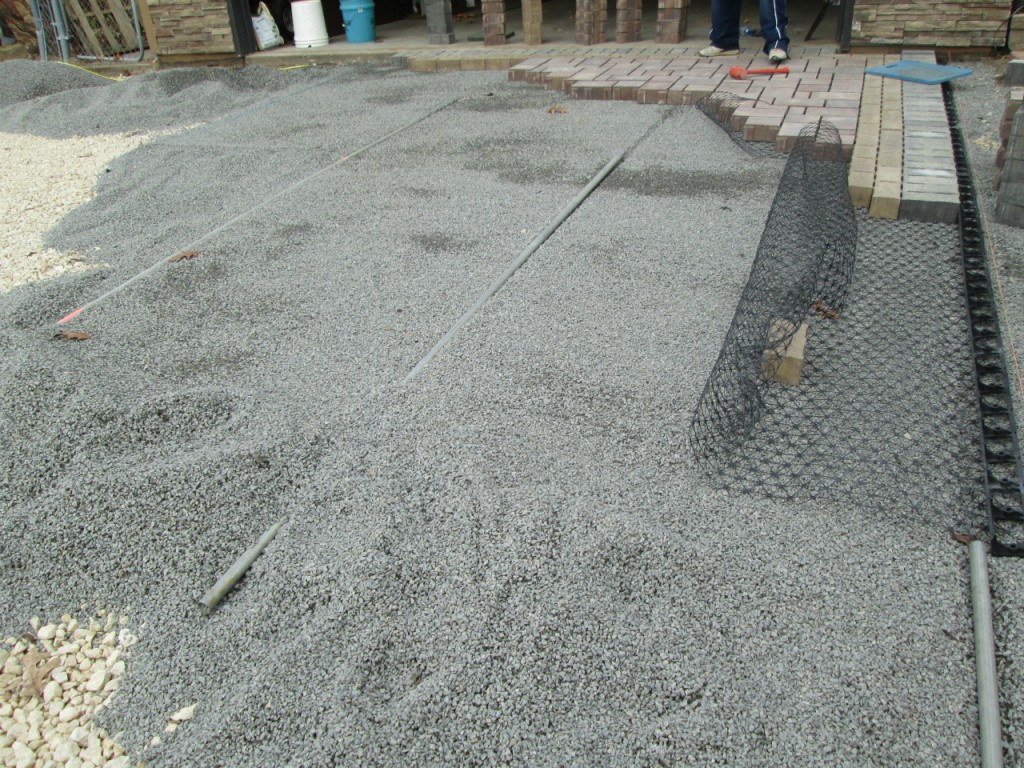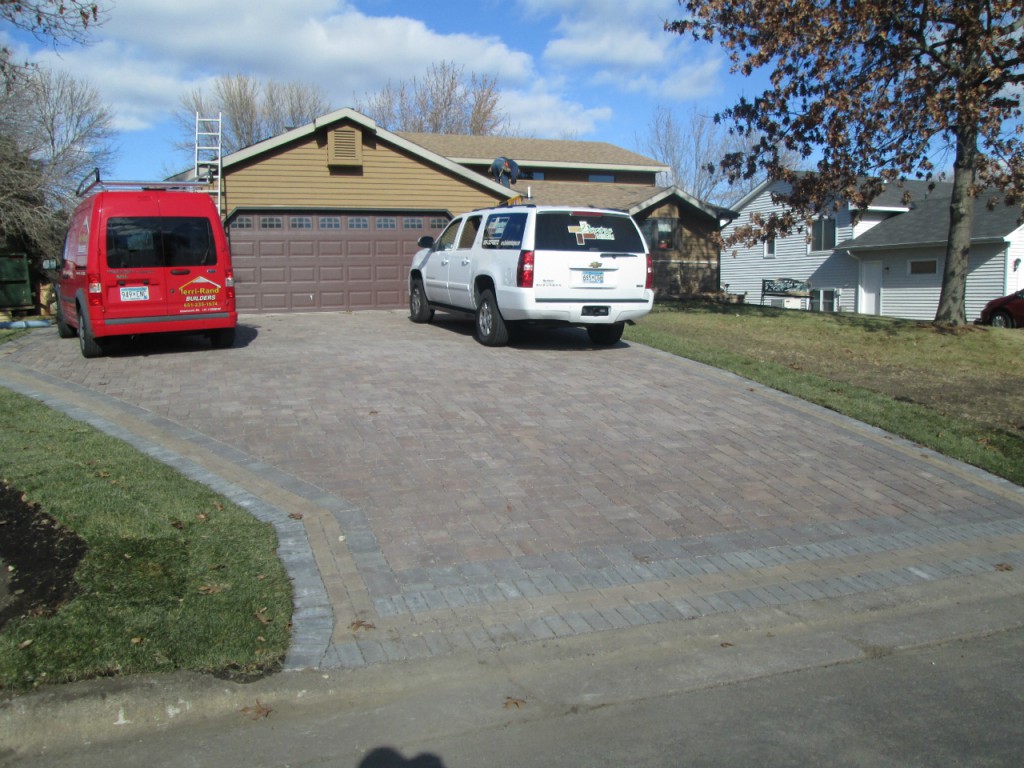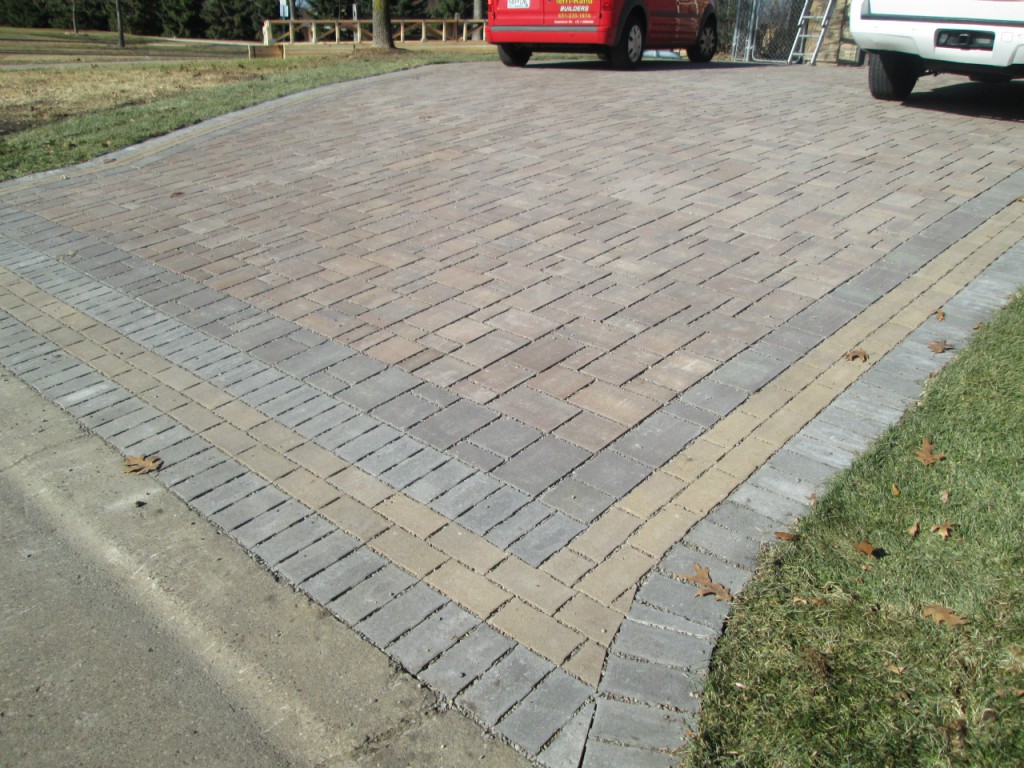Permeable Solutions
This Permeable driveway allowed the client to put the addition on his house that he had always wanted. The city would not issue a building permit because the clients home, driveway, patio and half-basketball court took up more hard space than was allowed already. His property had reached what is called “permeable threshold” in other words, his property did not have enough yard to absorb heavy rainfalls so erosion and water runoff were potential issues. We ripped out the asphalt driveway, replaced it with a city approved permeable design and the building permit was granted.
As stormwater flows across yards, fields, and paved surfaces, it picks up vehicle fluids, pesticides, fertilizers and other pollutants, which then become concentrated in lakes and waterways when the water is discharged from storm sewers. In this way, stormwater runoff adversely affects water quality in urban, suburban, and rural environments. Fortunately, awareness of the problem is growing, and mitigating technologies have become available.
Permeable interlocking concrete pavements (PICP) are among the tools now available to reduce stormwater runoff and improve water quality. Because they allow rainwater and snowmelt to infiltrate onsite, through the paved surface and into the subsoil, PICP systems help protect aquatic ecosystems, conserve water resources and mitigate flooding, while performing as functional surfaces for vehicle and pedestrian traffic.
PICP solutions can create usable spaces on properties that are unsuitable for traditional pavements—especially on urban commercial sites subject to new federal Clean Water Act stormwater regulations. Water filters naturally through the paved surface into subsurface detention areas and from there directly into the subsoil, or it can be discharged into an eco-swale or irrigation system. By creating subsurface detention and filtration areas, the system dramatically reduces or even eliminates need for retention ponds.
FINANCIAL ASSISTANCE AVAILABLE
Minnesota Watershed Districts Offer Grants and Loans to property owners for projects that meet certain qualifications for improving water quality, including the use of permeable pavers.
GREEN LANDSCAPING: TAKE THE LEED!
Using a Devine Hardscape’s PICP system could qualify your building project for credits under the U.S. Green Building Council’s Leadership in Energy and Environmental Design (LEED) program.
LEED-certified facilities will experience reduced maintenance and life-cycle operation costs. Recognizing that, many specifiers for building projects are beginning to write LEED certification requirements into bid specifications. And LEED points can be decisive in getting your projects approved by regulatory agencies in environmentally sensitive areas.That’s where permeable pavers can help. Willow Creek permeable pavers can earn LEED credits in several categories:
- STORMWATER RUNOFF REDUCTION (SS CREDITS 6.1, 6.2) One point can be earned for building on sites where the existing impervious area is greater than 50 percent and the rate and quantity of runoff is reduced by at least 25 percent. Permeable interlocking concrete pavements can reduce runoff to zero for typical storms.
- LOCAL MATERIALS (MR CREDITS 5.1, 5.2) One to two points can be earned for using local materials: a minimum of 10 to 20 percent of building materials manufactured within a radius of 800 km (500 miles). An additional point is earned if 50 percent of the regionally manufactured materials are extracted, harvested or recovered within this same radius.
- HEAT ISLAND REDUCTION (SS Credit 7.1) One point can be earned for heat island reduction. An option for meeting this requirement is to use light-colored materials, including pavers, with a Solar Reflectance Index (SRI) of at least 29 for 50 percent of the site’s non-roof impervious surfaces.
For more information on the LEED program, contact the U.S. Green Building Council at (800) 795-1747, or visit www.usgbc.org/LEED.





